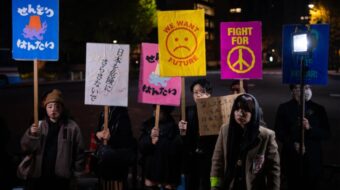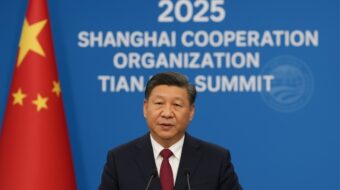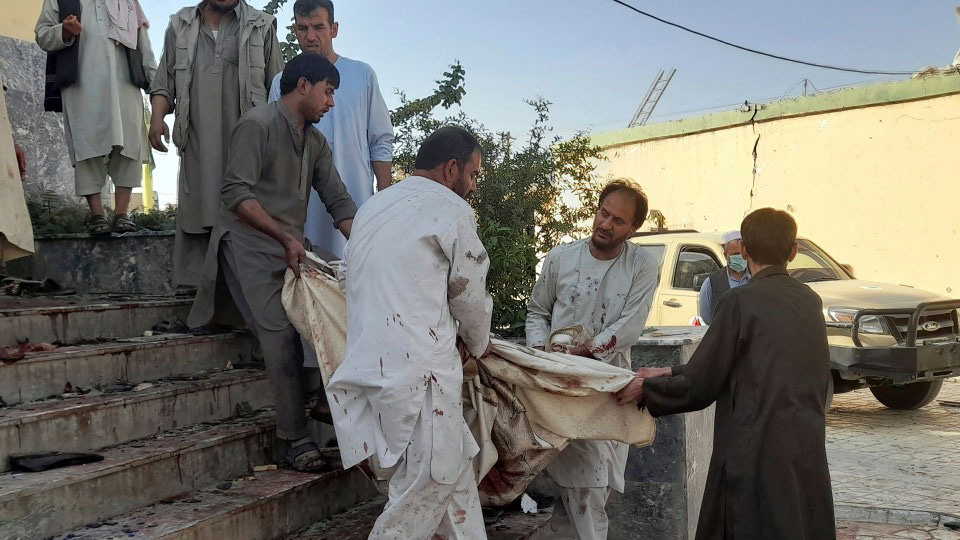
The future of Afghanistan will be determined not only in Kabul, where the Taliban is now firmly in power but also in places such as the Wakhan Corridor. A narrow strip of land that runs along the northern fringe of Afghanistan, the Corridor was formed in 1893 as a buffer between the Tsarist empire of Russia and the British empire of India.
It is sparsely populated, with its roughly 15,000 Wakhi (Kyrgyz) residents reliant upon adventure tourism. In normal times, the people suffer from malnutrition and illiteracy, are ignored by governments, and rely upon black tea and bread for their survival. With the pandemic and the escalation of the war, tourism has dried up and money is scarce.
The Corridor now divides Tajikistan from Pakistan and is Afghanistan’s only direct border with China. The last town in Afghanistan before the Chinese border is Qala-e Mufushad. There is an expectation there that it might become the key rail station for a Chinese Belt and Road Initiative train that would eventually run from Ürümqi (China) to Kabul. No doubt the rail link, if ever built, will break some of the isolation of the area.
But with fresh terror attacks in Afghanistan possibly being carried out by extremists with links to China’s Xinjiang region, the Wakhan Corridor’s position as a transit point for terrorism could threaten its promise as Afghanistan’s entry point to the world economy. Those now in power in Kabul thus have plenty of problems to deal with, and there’s no separating the domestic from the foreign.
Threats of various kinds
When it comes to Afghanistan, much of the world’s focus is on the possibility of a civil war breaking out, the suffocation of the rights of Afghan women, and the violence inflicted by sections of the Taliban on the Afghan people (particularly minorities). But there is a general problem in Afghanistan that requires attention: poverty.
On Sept. 25, 2021, Afghanistan’s new Economy Minister, Qari Din Mohammad Hanif, said that his government does not want “help and cooperation from the world as the previous government. The old system was supported by the international community for 20 years but still failed.” It is fair to say that Hanif has no experience in running a complex economy since he has spent most of his career doing political and diplomatic work for the Taliban (both in Afghanistan and in Qatar). However, during the first Taliban government from 1996 to 2001, Hanif was the planning minister and in that position, dealt with economic affairs.
Hanif is right to point out that the governments of Presidents Hamid Karzai (2001-14) and Ashraf Ghani (2014-21), despite receiving billions of dollars in economic aid, failed to address the basic needs of the Afghan population. At the end of their rule—and 20 years of U.S. occupation—one in three people are facing hunger, 72% of the population lingers below the poverty line, and 65% of the people have no access to electricity. No amount of bluster from the Western capitals can obscure the plain fact that support from the “international community” resulted in virtually no economic and social development in the country.
Poor north?
Hanif, who is the only member of Afghanistan’s new cabinet from the country’s Tajik ethnic minority, comes from the northeastern Afghan province of Badakhshan. The northeastern provinces in Afghanistan are Tajik-dominated areas, and Badakhshan was the base from which the Northern Alliance swiftly moved under U.S. air cover to launch an attack against the Taliban in 2001. In early August 2021, the Taliban swept through these districts. “Why would we defend a government in Kabul that did nothing for us?” said a former official in Karzai’s government who lives in Badakhshan capital, Fayzabad.
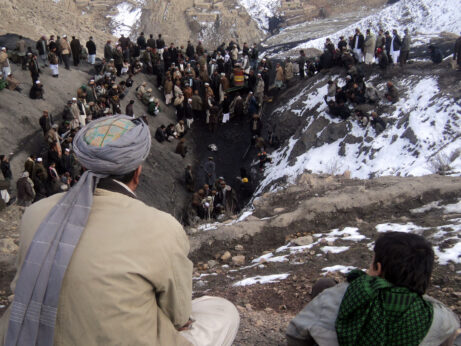
Between 2009 and 2011, 80% of USAID funds that came into Afghanistan went to areas of the south and east, which had been the natural base of the Taliban. Even this money, a U.S. Senate report noted, went toward “short-term stabilization programs instead of longer-term development projects.” In 2014, Haji Abdul Wadood, then governor of the Argo district in Badakhshan, told Reuters, “Nobody has given money to spend on developmental projects. We do not have resources to spend in our district, our province is a remote one and attracts less attention.”
Hanif’s home province of Badakhshan—and its neighboring areas—suffer from great poverty, with rates upwards of 60%. When he talks about failure, Hanif has his home province in mind.
For thousands of years, the province of Badakhshan has been home to mines for gemstones such as lapis lazuli. In 2010, a U.S. military report estimated that there was at least $1 trillion worth of precious metals in Afghanistan; later that year, Afghanistan’s then Minister of Mines Wahidullah Shahrani told BBC radio that the actual figure could be three times as much. The impoverished north might not be so poor after all.
With opium production contributing a large chunk of Afghanistan’s gross domestic product, it is often a focus of global media coverage on the country’s economy and has partly financed the terrible wars that have wracked the country for the past several years. The gems of Badakhshan, meanwhile, provided the financing for Ahmad Shah Massoud’sJamiat-e Islami faction in the 1980s. After 1992, when Massoud became the defense minister in Kabul, he made an alliance with a Polish company, Intercommerce, to sell the gems for an estimated $200 million per year. When the Taliban ejected Massoud from power, he returned to the Panjshir Valley and used the Badakhshan, Takhar, and Panjshir gems to finance his anti-Taliban resistance.
When the Northern Alliance, which included Massoud’s faction, came to power under U.S. bombardment in 2001, these mines became the property of the Northern Alliance commanders. Men such as Haji Abdul Malek, Zekria Sawda, and Zulmai Mujadidi—all Northern Alliance politicians—controlled the mines. Mujadidi’s brother, Asadullah Mujadidi, was the militia commander of the Mining Protection Force, which guarded the mines for these new elites.
In 2012, Mining Minister Shahrani revealed the extent of corruption in the deals, which he had made clear to the U.S. Embassy in 2009. Shahrani’s attempt at transparency, however, was understood inside Afghanistan as a mechanism to delegitimize Afghan mining concerns and push through a new law that would allow international mining companies more freedom of access to the country’s resources.
Various international entities—including Centar (United Kingdom) and the Polish billionaire Jan Kulczyk—attempted to access the gold, copper, and gemstone mines of the province. Centar formed an alliance with the Afghanistan Gold and Minerals Company, headed by former Urban Development Minister Sadat Naderi. The consortium’s mining equipment has now been seized by the Taliban. Earlier this year, Shahrani was sentenced to 13 months’ jail time by the Afghan Supreme Court for misuse of authority.
Foreign terrorists
Meanwhile, violence competes with poverty to be the top contributor to Afghanistan’s unstable future. On Oct. 8, a terrible blast struck the worshippers attending Friday noon prayers at the Gozar-e-Sayed Abad Mosque in the Khan Abad district of Bandar, the capital of Kunduz, one of Afghanistan’s largest cities in its northern belt. This is a mosque frequented by Shia Muslims, who were referred to as “our compatriots” by Taliban spokesperson Zabiullah Mujahid. Forty-six people died immediately in the blast, and local officials said that many more people were injured in the incident. Not long afterward, the Islamic State in Khorasan Province, ISKP (ISIS-K), took credit for the attack on its Telegram channel. The suicide bomber was identified as Mohammed al-Uyguri by ISIS-K.
The name of the attacker raised red flags across the region. It indicated that he belonged to the Uyghur community and had a relationship with the Xinjiang region of western China, which is home to most of the world’s Uyghur population. That a China-based extremist attacked a Shia Mosque raised eyebrows in both Beijing and Tehran.
In June 2021, the United Nations reported on the presence of between 8,000 and 10,000 “foreign terrorist fighters” in Afghanistan. The report further stated that these fighters were mainly “from Central Asia, the North Caucasus region of the Russian Federation, Pakistan, and the Xinjiang Uighur Autonomous Region of China.” Although most of the fighters had reported an affiliation with the Taliban, “many also support Al-Qaida” and “[o]thers are allied with ISIL or have ISIL sympathies,” said the report. ISIL refers to the Islamic State of Iraq and the Levant, whose Afghan franchise is ISIS-K.
In 2019, in Turkey, I encountered a group of Uyghur fighters from various terrorist organizations, including the East Turkestan Islamic Movement (ETIM), which is now called the Turkistan Islamic Party (TIP). These were hardened fighters whose main goal was to fight “infidels”; they did not seem interested in anything other than that. The United Nations placed the ETIM on their terrorist list in 2002.
During the war on Syria, large sections of the ETIM (as the TIP) moved to the Syria-Turkey border. The TIP is now largely based in Idlib, Syria, which is the hub of various global jihadi organizations. When it became clear that the Taliban was going to take power in Afghanistan, many jihadis from Central Asia, including from China and Tajikistan, left Idlib for Afghanistan. ETIM leader Abdul Haq remains in Syria, where he is also a member of the Shura Council of Al Qaeda.
Worries abound in Iran…
On Oct. 4, four days before the attack on the mosque in Afghanistan, an Iranian delegation arrived in Afghanistan to hold talks about cross-border trade and seek assurances that the Taliban will not permit attacks on either Afghan Shia or on Iran. Meanwhile, in Kabul, governors of two neighboring border provinces—Mohammad Sadegh Motamedian of Iran’s Khorasan Razavi and Maulvi Abdul Qayum Rohani of Afghanistan’s Heart—agreed on facilitating more cross-border trade and ensuring that there is no cross-border violence.
In another meeting that took place on Oct. 4 with Motamedian at the Iranian border town of Taybad, Hassan Rohani’s deputy, Maulvi Sher Ahmad Ammar Mohajer, said that the Afghan government will “never allow individuals or foreign groups such as ISIS to use Afghan territory against the Islamic Republic of Iran.” Referencing the United States, Maulvi Rohani said, “We (Iran and Afghanistan) have defeated the common enemy.”
All signs indicate some sincerity on the part of the Taliban government. On Oct. 7, the day before the ISIS-K attack on the Shia mosque in Kunduz, Maulvi Abdul Salam Hanafi—the Deputy Prime Minister of Afghanistan—met with a group of Shia elders to assure them that the Taliban would not allow anti-Shia activity. Nevertheless, members of the Hazara community, who are the Shia community of Afghanistan, tell me that they fear a return to the previous rule of the Taliban. During that time, documented massacres by the Taliban against the Hazara Shia community provided evidence of the Taliban’s sectarianism. This is why Iran opposed the Taliban, and why Iran has not formally recognized the current government in Kabul. However, for the past few years, the Iranians have been working with the Taliban against ISIS and ISIS-K, with Iran’s Brigadier General Esmail Qaani as the liaison to the Taliban.
…And in China
In the 1990s, the Taliban government allowed the ETIM and other Uyghur groups to operate from Afghanistan. This time, there is already evidence that they will not officially permit such activity. Earlier this year, ETIM fighters had relocated from Syria to the Badakhshan province in Afghanistan; reports suggested that the fighters had gathered in the sparsely populated Wakhan Corridor in the province, which leads to China. But in recent weeks, the Taliban security has moved them from the towns surrounding the “Afghan-Chinese border” to other parts of Afghanistan. Rumors have been flying about the Taliban’s intention to extradite the ETIM—if not all the 2,000 Uyghurs in Afghanistan—to China, but such speculation remains unconfirmed.
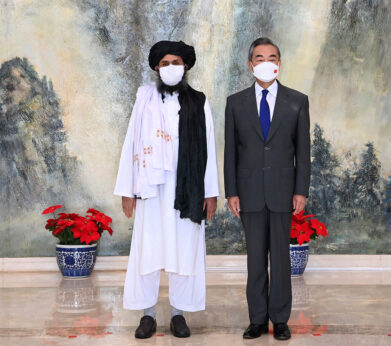
In late August, Mattia Sorbi of Italy’s La Repubblica newspaper met with Taliban spokesperson Zabiullah Mujahid. This was a significant interview for the Taliban because Italy is a key partner of China’s Belt and Road Initiative (BRI). Mujahid told Sorbi that China is currently assisting Afghanistan with short-term funds (including $31 million USD in emergency funds) and that the Taliban see the BRI as their “passport to markets around the world.” China’s long-term concession of the MesAynak copper mine, south of Kabul, will allow it “to come back to life and be modernized,” said Mujahid. The Taliban is keen on the BRI, he said, “which will lead to reviving the ancient Silk Road.”
The BRI runs on both sides of Afghanistan, the northern route through Tajikistan to Iran and the China-Pakistan Economic Corridor running southward. The mouth of the Wakhan Corridor would be the opening of a third route, running toward Kabul and to Iran (and linking Pakistan’s agricultural goods to markets in Central Asia and Russia).
Isolation from China and Iran is not a welcome thought in Kabul. The United States is prepared to re-engage with the Taliban, which could alter the equations on the ground. If the U.S. allows Kabul to access the funds its central bank has sitting in New York or the country’s IMF funds, the money will help provide the Taliban with a lifeline. But they are not a long-term solution for Afghanistan, which is caught as it is, between China and Iran and the possibility of its connection to the new silk road.
What will the Taliban do?
Economy Minister Hanif has an impossible agenda. The IMF has suspended funds for Afghanistan, and the U.S. government continues to block access to the nearly $10 billion USD of Afghan external reserves held in the United States. Some humanitarian aid has now entered the country, but it will not be sufficient. The Taliban’s harsh social policy, particularly against women, will discourage many aid groups from returning to the country.
Officials at the Da Afghanistan Bank (DAB), the country’s central bank, tell me that the options before the government are minimal. Institutional control over the mining wealth has not been established. “What deals were cut profited a few individuals and not the country as a whole,” said one official. One major deal to develop the MesAynak copper mine made with the Metallurgical Corporation of China and with Jiangxi Copper has been sitting idle since 2008.
At the Shanghai Cooperation Organization (SCO) meeting in mid-September, Tajikistan’s President Emomali Rahmon spoke about the need to prevent terrorist groups from moving across the Afghan borders to disrupt Central Asia and western China. Rahmon positioned himself as a defender of the Tajik peoples, although poverty of the Tajik communities on both sides of the border should be as much a focus of attention as upholding the rights of the Tajiks as a minority in Afghanistan.
There is no public indication from the SCO that it would prevent not only cross-border terrorism but also cross-border smuggling. The largest quantities of heroin and opium from northern Afghanistan go to Tajikistan; untold sums of money are made in the illegal movement of minerals, gemstones, and metals out of Afghanistan. Hanif has not raised this point directly, but officials at DAB say that unless Afghanistan better commandeers its own resources, something it has failed to do over the past two decades, the country will not be able to improve the living conditions of its people, least of all in places such as the Wakhan Corridor.



